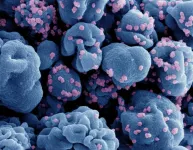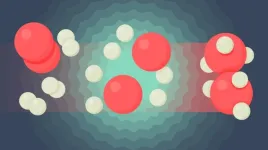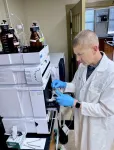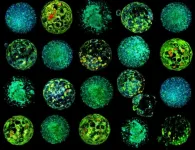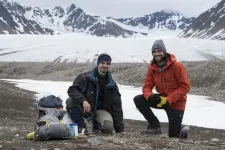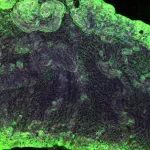(Press-News.org) A Phase 1 trial testing the safety of an experimental nasal vaccine that may provide enhanced breadth of protection against emerging variants of SARS-CoV-2, the virus that causes COVID-19, is now enrolling healthy adults at three sites in the United States. The National Institutes of Health (NIH) is sponsoring the first-in-human trial of the investigational vaccine, which was designed and tested in pre-clinical studies by scientists from NIH’s National Institute of Allergy and Infectious Diseases (NIAID) Laboratory of Infectious Diseases.
“The rapid development of safe and effective COVID-19 vaccines was a triumph of science, and their use greatly mitigated the toll of the pandemic,” said NIAID Director Jeanne M. Marrazzo, M.D., M.P.H. “While first-generation COVID-19 vaccines continue to be effective at preventing severe illness, hospitalizations, and death, they are less successful at preventing infection and milder forms of disease. With the continual emergence of new virus variants, there is a critical need to develop next-generation COVID-19 vaccines, including nasal vaccines, that could reduce SARS-CoV-2 infections and transmission.”
The study aims to enroll 60 adult participants, ages 18 to 64 years old, who previously received at least three prior doses of an FDA-approved or -authorized mRNA COVID-19 vaccine. The trial sites are Baylor College of Medicine, Houston; The Hope Clinic of Emory University, Decatur, Georgia; and New York University, Long Island. Hana M. El Sahly, M.D., at the Baylor College of Medicine Vaccine Research Center, is leading the study.
Study volunteers will be divided into three cohorts. Those in the first cohort will receive one dose of the investigational vaccine delivered in a nasal spray at the lowest dosage, with enrollees in the next two cohorts receiving progressively higher doses. During seven follow-up visits over about one year, scientists will measure how well the vaccine candidate is tolerated, and if it generates an immune response in the blood and in the nose.
The investigational vaccine, MPV/S-2P, uses murine pneumonia virus (MPV) as a vector to deliver a version of the SARS-CoV-2 spike protein (S-2P) stabilized in its prefusion conformation. MPV does not cause disease in humans or non-human primates but does have an affinity for epithelial cells that line the respiratory tract and may be effective in delivering vaccine to the places where natural coronavirus infections begin.
In pre-clinical non-human primate studies, MPV/S-2P was safe and well tolerated. It produced robust systemic immune responses, including SARS-CoV-2-directed antibodies, as well as local immunity in cells in the mucosal tissues lining the nose and respiratory tract. Studies in humans and animals suggest that mucosal immunity is more effective than systemic immunity in controlling replication of respiratory viruses.
This is the first NIAID clinical trial to be conducted as part of the U.S. Department of Health and Human Services (HHS) Project NextGen. Led by the Biomedical Advanced Research and Development Authority, part of the HHS Administration for Strategic Preparedness and Response, and NIAID, Project NextGen is a coordinated effort between the federal government and the private sector to broaden the pipeline of new, innovative vaccines and therapeutics. Through Project NextGen, NIAID plans to facilitate clinical development of promising next-generation COVID-19 vaccines in Phase 1 and 2 trials.
More information about the trial is available at clinicaltrials.gov using the identifier NCT06441968.
NIAID conducts and supports research—at NIH, throughout the United States, and worldwide—to study the causes of infectious and immune-mediated diseases, and to develop better means of preventing, diagnosing and treating these illnesses. News releases, fact sheets and other NIAID-related materials are available on the NIAID website.
About the National Institutes of Health (NIH): NIH, the nation's medical research agency, includes 27 Institutes and Centers and is a component of the U.S. Department of Health and Human Services. NIH is the primary federal agency conducting and supporting basic, clinical, and translational medical research, and is investigating the causes, treatments, and cures for both common and rare diseases. For more information about NIH and its programs, visit www.nih.gov.
NIH...Turning Discovery Into Health®
END
A new North Carolina State University study examining the availability and content of commercial stock farmworker photos – images often used in health- and safety-education materials for farmworkers – shows a dearth of useful depictions of the people who work on farms and the tasks they perform. The study’s recommendations could lead to more relevant education materials that gain more attention and engagement from farmworkers
“I was really interested in how farmworkers were represented in stock-photo libraries,” said Catherine LePrevost, agromedicine extension specialist and associate extension professor in NC State’s Department ...
URBANA, Ill. — Domesticated animals play a prominent role in our society, with two-thirds of American families enjoying the companionship of pets and many others relying on animal products for their nutritional needs. But the process of domestication remains a bit of a mystery. Convincing wild animals they are safe enough to coexist and mate in enclosures and in close proximity to humans and other animals is no small feat. What does it take behaviorally and genetically for that to happen?
For the most part, the animals we’ve domesticated have been docile for so long that ...
The Simons Foundation’s Flatiron Institute has launched a new initiative focused on advancing the science of catalysis. The Initiative for Computational Catalysis (ICC), which began operations on July 1, will harness computational techniques to study and design substances called catalysts that speed up chemical reactions. Such substances promise to be instrumental in clean energy generation and in reducing greenhouse gas emissions from industrial processes.
“These are big questions that are hard to address from the very first step of the ...
WASHINGTON – U.S. Naval Research Laboratory (NRL) Remote Sensing Division intern, Amaris McCarver, along with a team of astronomers, discovered the first millisecond pulsar in the stellar cluster Glimpse-CO1 and recently published findings in the Astrophysical Journal.
Pulsars are natural laboratories for studying the behavior of matter under extreme gravitational and magnetic fields - conditions difficult or impossible to replicate on Earth.
They also function as natural timekeepers. Precise timing of the observed pulses from an array of pulsars offers a means to ...
Chicago (July 1, 2024) — What does whole wheat have that refined flour lacks? A new study reveals key differences in nutrient content along with exactly where nutrients are lost — and sometimes gained — along the journey from farm to table.
While previous studies have assessed the nutrients contained in various crops or in food products, the new study is among the first to bridge the two by tracing how processing and baking influence nutrient composition at each step.
Researchers report that levels of major minerals were cut by nearly three-quarters ...
A new technology developed by the "Bioengineering in Reproductive Health" team at the Institute for Bioengineering of Catalonia (IBEC) is able to visualise the metabolism of embryos obtained through in vitro fertilisation in order to decide which are most likely to implant correctly in the uterus and reaching full-term. It is a more accurate and reliable technique than traditional methods.
The revolutionary method, called METAPHOR", generates 3D images that reveal the colours present in the embryo in a completely non-invasive way. Certain naturally fluorescent compounds in the embryo's metabolism are also key to processes such as cellular respiration ...
Melting Arctic glaciers are in rapid recession, and microscopic organisms colonise the newly exposed landscapes. Dr. James Bradley, Honorary Reader in Arctic Biogeochemistry in the School of Biological and Behavioural Sciences at Queen Mary University of London, and his team, have revealed that yeasts play an important role in soil formation in the Arctic after glaciers have melted away.
Roughly 10% of Earth’s land surface is covered by glacial ice. However, glaciers are retreating ever further and ever faster because of global warming. As they do, ...
EMBARGOED UNTIL JULY 1, 2024 AT 3:00 PM U.S. EASTERN TIME
According to a new study published in the Proceedings of the National Academy of Sciences, extensive land areas have been left sitting idle after tropical forests were cleared in Indonesia, a country renowned for its biodiverse rainforests and carbon-rich peatlands. Since 1990, the country has lost 25% of its old-growth forest, and while over one-quarter (7.8 million hectares) of Indonesia’s deforested lands have been converted to palm oil plantations since ...
University of Cincinnati researchers have pioneered an animal model that sheds light on the role an understudied organ in the brain has in repairing damage caused by stroke.
The research, published July 5 in the Proceedings of the National Academy of Sciences, sought to learn more about how the adult brain generates new neurons to repair damaged tissue.
The research team focused on the choroid plexus, a small organ within brain ventricles that produces the brain’s cerebrospinal fluid (CSF). CSF circulates throughout the brain, carrying signaling molecules and other factors thought to be important for maintaining brain function. However, prior to this study, little ...
Smoking continues to rank as the foremost preventable cause of premature death. In a paper published this week in the Proceedings of the National Academy of Science (PNAS), Harvard researchers report findings that evoking feelings of gratitude in people who smoke helps reduce their urge to smoke, and increases their likelihood of enrollment in a smoking cessation program. They note that these findings could inform newer approaches to public health messaging campaigns that aim to reduce so-called “appetitive” risk behaviors like smoking, drinking, and drug use.
The research team built on the Appraisal Tendency Framework, a theoretical model of emotiona and decision making, ...
